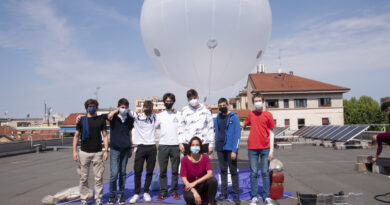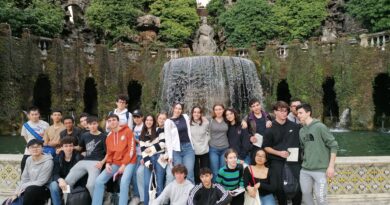| PROGRAMMA SVOLTO DI | Inglese Classe 1G LS |
|---|---|
| DOCENTE | Fontana Fabrizio |
| LIBRI DI TESTO | Jones, Kay, Brayshaw, Montanari, FOCUS AHEAD PRE-INTERMEDIATE, Pearson Longman |
| ORE SETTIMANALI | 5 |
| ORE TOTALI SVOLTE | 164 |
| CONOSCENZE DISPIPLINARI | Argomenti svolti PRINCIPALI FUNZIONI LINGUISTICHE SVILUPPATE Talking about daily activities, hobbies, the place you live etc. Describing people: appearance, clothes and personality Talking about habits Describe and discuss TV programmes and films Describing houses and homes, things inside and outside a house Talking about technology, science, inventions and computers Talking about the arts and the media, types of books and writers, films, music Talking about holidays and places to visit Talking about jobs and work Talking about school and education Comparing and contrasting things Discussing pros and cons Expressing the dates Making predictions Making plans Expressing decisions, offers and promises Talking about intentions and future arrangements Taking about necessity, lack of necessity, obligations Telling a story Describing photos Making suggestions Giving opinions; agreeing and disagreeing ESPONENTI GRAMMATICALI AFFRONTATI (Per i seguenti argomenti si faccia riferimento al testo “Grammar in Progress” e alle schede pubblicate su Classroom durante l’anno scolastico) • I pronomi personali soggetto e complemento • Il verbo to be - Regole generali - Usi di to be ed espressioni particolari (e.g. to be hungry, cold etc.) • L’aggettivo attributivo • Aggettivi e pronomi dimostrativi • Forma interrogativa - Subject and object questions - Wh- questions ending with prepositions • Aggettivi e pronomi possessivi • I numerali cardinali e ordinali • La data • Le nazionalità • Preposizioni di stato e moto a luogo • Preposizioni di tempo • Il Present Simple - Forma e usi - Spelling rules • Avverbi ed espressioni di frequenza • Il Present Continuous - Forma e usi - Spelling rules • Verbi di stato che non ammettono la forma progressiva • Uso contrastivo del Simple Present e del Present Continuous • To have e have got • Usi particolari di to have (e.g. to have a bath, a break etc.) • Il Past Simple - Forma e usi - Il Past Simple dei verbi irregolari. • Il Past Continuous e used to - Forma e usi • Uso contrastivo di Past Simple e Past Continuous • I tempi del futuro - Will, - To be going to, - Present continuous con significato futuro, - Simple present con significato futuro - Usi contrastivi delle diverse forme di futuro Il futuro nelle subordinate temporali e ipotetiche (first conditional) • Comparativi e superlativi - Il comparativo di uguaglianza, di maggioranza e di minoranza - Le forme superlative - Comparativi e superlativi irregolari - Costruzioni particolari con comparativi e superlativi (traduzione di “sempre più”; comparativi in correlazione) • Il Present Perfect Simple - Forma e usi - I participi passati irregolari - Uso di “gone” e “been” nel Present Perfect Simple - Espressioni particolari con il Present perfect (Es. “It is the first time...”; “... I have ever seen”) - Duration form con since e for • Uso contrastivo di Past simple e del Present Perfect • Frasi relative (who, which, that, where, when) CENNI • Il Past Perfect - Forma e usi • Il Present Conditional e il Past Conditional (would eat, would have eaten) - Forma e usi • Frasi ipotetiche: - Zero conditional - First conditional - Second conditional - Third conditional - Mixed conditional UNITÀ DI FOCUS AHEAD PRE-INTERMEDIATE (attività di reading, writing, listening, oral production e interaction e le esercitazioni grammaticali nelle corrispondenti sezioni del workbook): Unit 1 - Personality Unit 2 - Invention Unit 3 - The arts Unit 4 - Living Unit 5 - School Unit 6 - Work CORSO B1 PET (attività di reading, listening, writing e speaking sul testo "B1 Preliminary for Schools Trainer"): Test 1 Test 2 Test 3 Test 4 Test 5 Test 6 |
| COMPETENZE E ABILITA’ RELATIVE ALLA DISCIPLINA | PER LE COMPETENZE E ABILITA’ RELATIVE ALLA DISCIPLINA SI FA RIFERIMENTO ALLA PROGRAMMAZIONE DI DIPARTIMENTO |
| METODOLOGIE E STRUMENTI DI INSEGNAMENTO UTILIZZATI |
|
| CLIL | NON svolto |
| NUMERO DI VERIFICHE SVOLTE | 4 (primo trimestre) 6 (secondo pentamestre) |
| TIPOLOGIA DI INTERVENTI DI RECUPERO REALIZZATI |
|
| Descrizione modalità (in itinere) | Ripasso costante e ricorsivo degli argomenti svolti |



